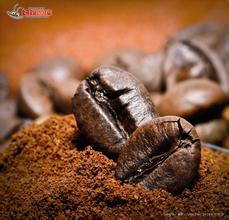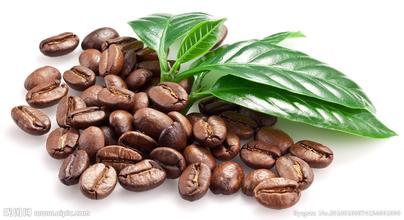Flavor description of Colombian Ramon Coffee Bean introduction to the production area of Grinding scale varieties
Flavor description of Colombian Ramon Coffee Bean introduction to the production area of Grinding scale varieties
Colombia is rich in products, especially coffee, flowers, gold and emeralds are known as the "four treasures". In 1808, a priest introduced coffee to Colombia for the first time from the French Antilles via Venezuela. Today, the country is the second largest coffee producer after Brazil, the world's largest exporter of Arabica coffee beans and the world's largest exporter of washed coffee beans. Colombian coffee is often described as having a silky taste. Of all the coffees, it has the best balance, soft and smooth taste, and can be drunk at any time. It has won more praise than any other coffee: known as "green gold".
Latitude, altitude, soil, plant origin of species and varieties of coffee in Colombian coffee growing areas, rain patterns produced by the climate of coffee growing areas and tropical convergence, changing topography, luminosity, favorable temperature range throughout the year, moderate and Rain Water distribution, as well as some common cultural practices including selective logging and transformation. It includes washing and drying. Very suitable for the growth of coffee, mild climate, humid air, and can harvest the pure taste of Colombian coffee regardless of season, from Colombia's natural environment with the most favorable conditions for coffee growth. But beyond that, it is inseparable from the hard work of local growers. In Colombia, coffee cultivation has reached 1.07 million hectares, there are about 302000 coffee plantations in the country, and 30 to 40 per cent of the rural population depends directly on coffee production. Although there are many farms in Colombia, they are not large in area. The area of each farm is only about 2 hectares, and more than 80% of the coffee plantations have only about 5000 coffee trees, with an average of 3000.
The world coffee is divided into two series, one is the "hard" coffee represented by Brazil, which has a strong flavor, and the other is the "soft" coffee represented by Colombia, which has a light flavor. The difference lies in the altitude of the producing area and the method of planting. Coffee is planted extensively in hilly red soil in Brazil and intensive cultivation in mountain black soil in Colombia. The Colombian super aroma is rich and thick, with clear high-quality acidity, high balance, and sometimes nutty, lingering aftertaste. In terms of appearance and quality, the Columbia Super Class is quite excellent, just like a woman's vaguely charming, charming and just right, memorable.
Each caffeine variety has a different origin and has its own strong character, such as the masculine Mantenin, which resembles the character of an iron and steel man, and the mellow, fragrant Blue Mountain Coffee, which is called the gentle woman's yearning addiction. Columbia Super Coffee, which has always been light-scented, is the most suitable for those who like light sex. Such people do not want to drink coffee as a sitting thing, from sour, sweet, bitter, astringent experience what profound philosophy of life, just want to simply drink a cup of delicious coffee, a cup of hot Colombian coffee, let these people realize that "the best state of life is rich and quiet." Quiet, because of getting rid of the temptation of external fame and gain; rich, because of having the treasure of the inner spiritual world. They believe that the greatest happiness in life is to reap such an incisive interpretation of the realm.

Important Notice :
前街咖啡 FrontStreet Coffee has moved to new addredd:
FrontStreet Coffee Address: 315,Donghua East Road,GuangZhou
Tel:020 38364473
- Prev

Introduction to Panamanian Coffee Flavor description Variety treatment method and Taste Manor
Panamanian Coffee Flavor describes the region where varieties are produced. Panama is also the narrowest country that shares the Atlantic and Pacific coastlines. And this has a far-reaching impact on coffee production. In the coffee-producing area of Chiriqu, the hometown of world-famous estates such as Hacienda La Esmeralda, Elida Estate, Finca Nuguo, and Finca La Mula.
- Next

Guatemalan Coffee Bean grading Guatemala Coffee Flavor characteristics describe Guatemalan Coffee Story
Guatemala Coffee Bean graded Flavor description Taste Variety production area treatment method introduction Central American coffee is rated according to the altitude at which coffee grows in Mexico, Honduras, Haiti and other countries according to the height of Strictly High Grown (extremely high mountain beans, referred to as SHG), followed by High Grown (mountain beans, referred to as HG) Mexico called Altura, in Spanish
Related
- Detailed explanation of Jadeite planting Land in Panamanian Jadeite Manor introduction to the grading system of Jadeite competitive bidding, Red bid, Green bid and Rose Summer
- Story of Coffee planting in Brenka region of Costa Rica Stonehenge Manor anaerobic heavy honey treatment of flavor mouth
- What's on the barrel of Blue Mountain Coffee beans?
- Can American coffee also pull flowers? How to use hot American style to pull out a good-looking pattern?
- Can you make a cold extract with coffee beans? What is the right proportion for cold-extracted coffee formula?
- Indonesian PWN Gold Mandrine Coffee Origin Features Flavor How to Chong? Mandolin coffee is American.
- A brief introduction to the flavor characteristics of Brazilian yellow bourbon coffee beans
- What is the effect of different water quality on the flavor of cold-extracted coffee? What kind of water is best for brewing coffee?
- Why do you think of Rose Summer whenever you mention Panamanian coffee?
- Introduction to the characteristics of authentic blue mountain coffee bean producing areas? What is the CIB Coffee Authority in Jamaica?

